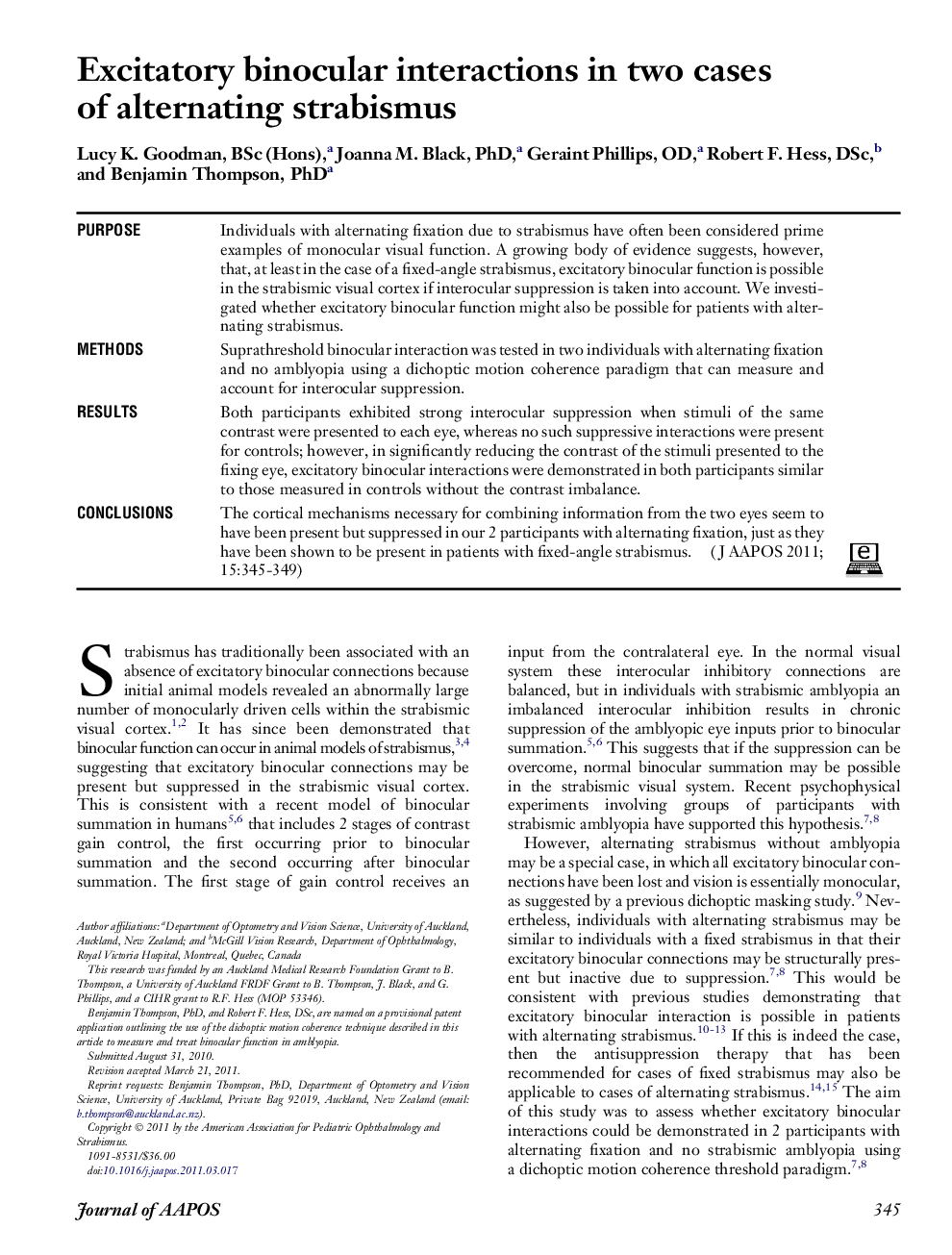| Article ID | Journal | Published Year | Pages | File Type |
|---|---|---|---|---|
| 4014557 | Journal of American Association for Pediatric Ophthalmology and Strabismus | 2011 | 5 Pages |
PurposeIndividuals with alternating fixation due to strabismus have often been considered prime examples of monocular visual function. A growing body of evidence suggests, however, that, at least in the case of a fixed-angle strabismus, excitatory binocular function is possible in the strabismic visual cortex if interocular suppression is taken into account. We investigated whether excitatory binocular function might also be possible for patients with alternating strabismus.MethodsSuprathreshold binocular interaction was tested in two individuals with alternating fixation and no amblyopia using a dichoptic motion coherence paradigm that can measure and account for interocular suppression.ResultsBoth participants exhibited strong interocular suppression when stimuli of the same contrast were presented to each eye, whereas no such suppressive interactions were present for controls; however, in significantly reducing the contrast of the stimuli presented to the fixing eye, excitatory binocular interactions were demonstrated in both participants similar to those measured in controls without the contrast imbalance.ConclusionsThe cortical mechanisms necessary for combining information from the two eyes seem to have been present but suppressed in our 2 participants with alternating fixation, just as they have been shown to be present in patients with fixed-angle strabismus.
